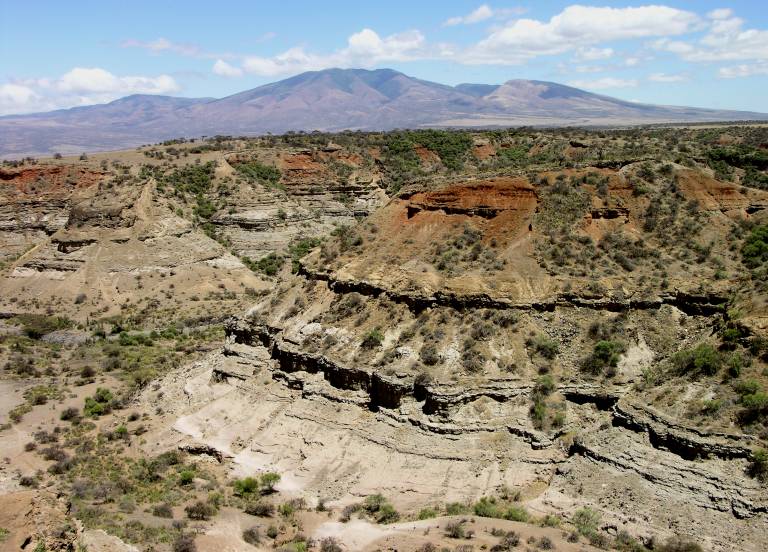Geochemical "fingerprints" for Olduvai Gorge Bed II tuffs and implications for the Oldowan-Acheulean transition
3 February 2016
Bed II is a critical part of early Pleistocene Olduvai Gorge, Tanzania.
 Its deposits include transitions from humid to more arid conditions (with associated faunal changes), fromHomo habilis to erectus, and from Oldowan to Acheulean technology.
Its deposits include transitions from humid to more arid conditions (with associated faunal changes), fromHomo habilis to erectus, and from Oldowan to Acheulean technology. Bed II (~ 1.8-1.2 Ma) is stratigraphically and environmentally complex, with facies changes, faulting, and unconformities, making site-to-site correlation over the ~ 20 km of exposure difficult. Bed II tuffs are thinner, less evenly preserved, and more reworked than those of Bed I. Five marker tuffs (Tuffs IIA-IID, Bird Print Tuff (BPT)), plus local tephra, were collected from multiple sites and characterized using stratigraphic position, mineral assemblage, and electron probe microanalysis of phenocryst (feldspar, hornblende, augite, titanomagnetite) and glass (where available) composition. Lowermost Bed II tuffs are dominantly nephelinitic, Middle Bed II tuffs (BPT, Tuff IIC) have basaltic components, and upper Bed II Tuff IID is trachytic. The BPT and Tuff IID are identified widely using phenocryst compositions (high-Ca plagioclase and high-Ti hornblende, respectively), though IID was originally (Hay, 1976) misidentified as Tuff IIC at Loc 91 (SHK Annexe) in the Side Gorge. This work helps establish a high-resolution basin-wide paleolandscape context for the Oldowan-Acheulean transition and helps link hominin, faunal and archaeological records.
Geochemical "fingerprints" for Olduvai Gorge Bed II tuffs and implications for the Oldowan-Acheulean transition
Authors: Lindsay McHenry (University of Milwaukee-Wisconsin), Jackson Njau (Indiana University), Ignacio del la Torre (University College London), Michael Pante (Colorado State University)
Journal: Quaternary Research
 Close
Close

